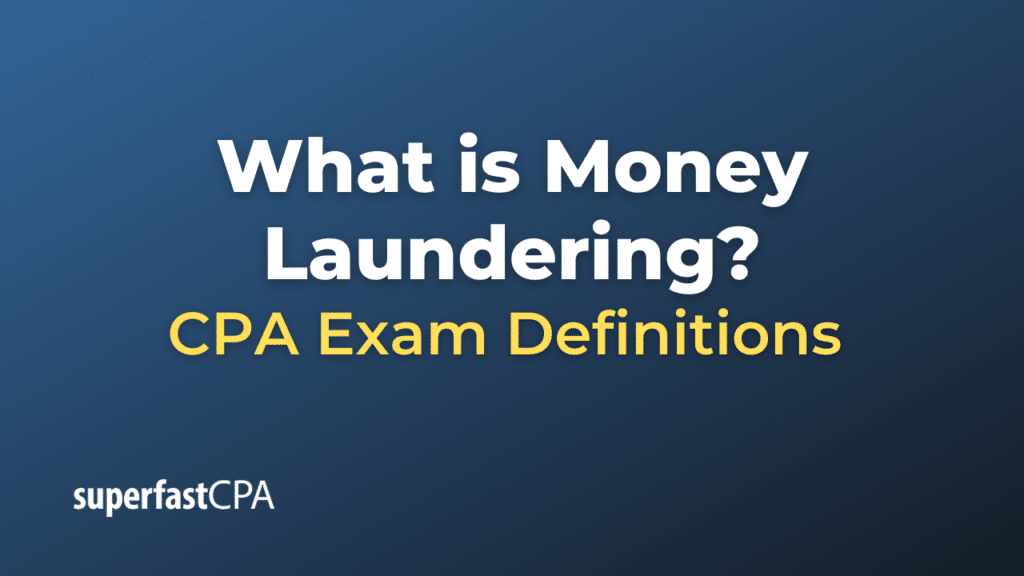Money Laundering
Money laundering is the process of making illegally-gained proceeds (dirty money) appear legal, sometimes referred to as “cleaning”. It usually involves three steps: placement, layering, and integration.
- Placement refers to the process of introducing the illicit money into the financial system. This might be done by breaking up large amounts of cash into less conspicuous smaller sums that are then deposited directly into a bank account, or by purchasing a series of instruments (such as checks or money orders) that are then collected and deposited into accounts at another location.
- Layering is the most complex aspect of the money laundering process. It typically involves transactions designed to obscure the source of the money. For example, the launderer might channel the money through the purchase and sales of investment instruments, or wire the funds through several accounts at multiple banks across the globe. This makes the laundering process more difficult to detect and trace.
- Integration is where the money re-enters the legitimate economy. The launderer might invest the funds into real estate, luxury assets, or business ventures where they blend with legitimate funds.
Money laundering is a serious crime. The International Monetary Fund estimates that the amount of money laundered globally in one year is 2-5% of global GDP, or $800 billion – $2 trillion USD in current US dollars. However, due to the illegal nature of these transactions, it’s not possible to accurately quantify the amount of money that is globally laundered every year.
Organizations such as the Financial Action Task Force (FATF) have been established to combat money laundering and terrorism financing. They do this by setting international standards that aim to prevent these illegal activities and the harm they cause to society.
Example of Money Laundering
Here’s a simplified example to demonstrate the stages of money laundering:
Let’s say a criminal operation makes a significant amount of money from illegal activities, such as drug trafficking or organized crime. The money they earn is in cash and obviously can’t be simply deposited in the bank without raising suspicions. Here’s how they might try to launder the money:
- Placement: The criminals deposit the cash in smaller amounts over a period of time into a legitimate bank account, perhaps using a business they own as a front. This might be a cash-intensive business like a restaurant, car wash, or a nightclub, where frequent cash transactions wouldn’t be unusual. This step is risky because large or frequent cash deposits can alert authorities to potential illicit activities.
- Layering: The criminals then start conducting numerous transactions, transferring the money between various accounts, often in different countries, and buying and selling assets. They may use digital transactions, purchase of assets, shell companies, and offshore accounts to make the origin of the money harder to trace. The aim is to create a complex web of financial activities to confuse any authorities trying to follow the money trail.
- Integration: The “cleaned” money, now harder to distinguish from legitimate funds, is brought back into the economy. The criminals might invest this money in legal businesses or in assets like property or artwork. At this point, the money appears to be legitimate income and can be freely used without raising suspicion.
Remember, money laundering is illegal and can result in severe penalties, including hefty fines and imprisonment. This example is a simplification of a complex and illegal process that can take many different forms. Anti-money laundering laws are in place worldwide to detect and prevent such activities.













